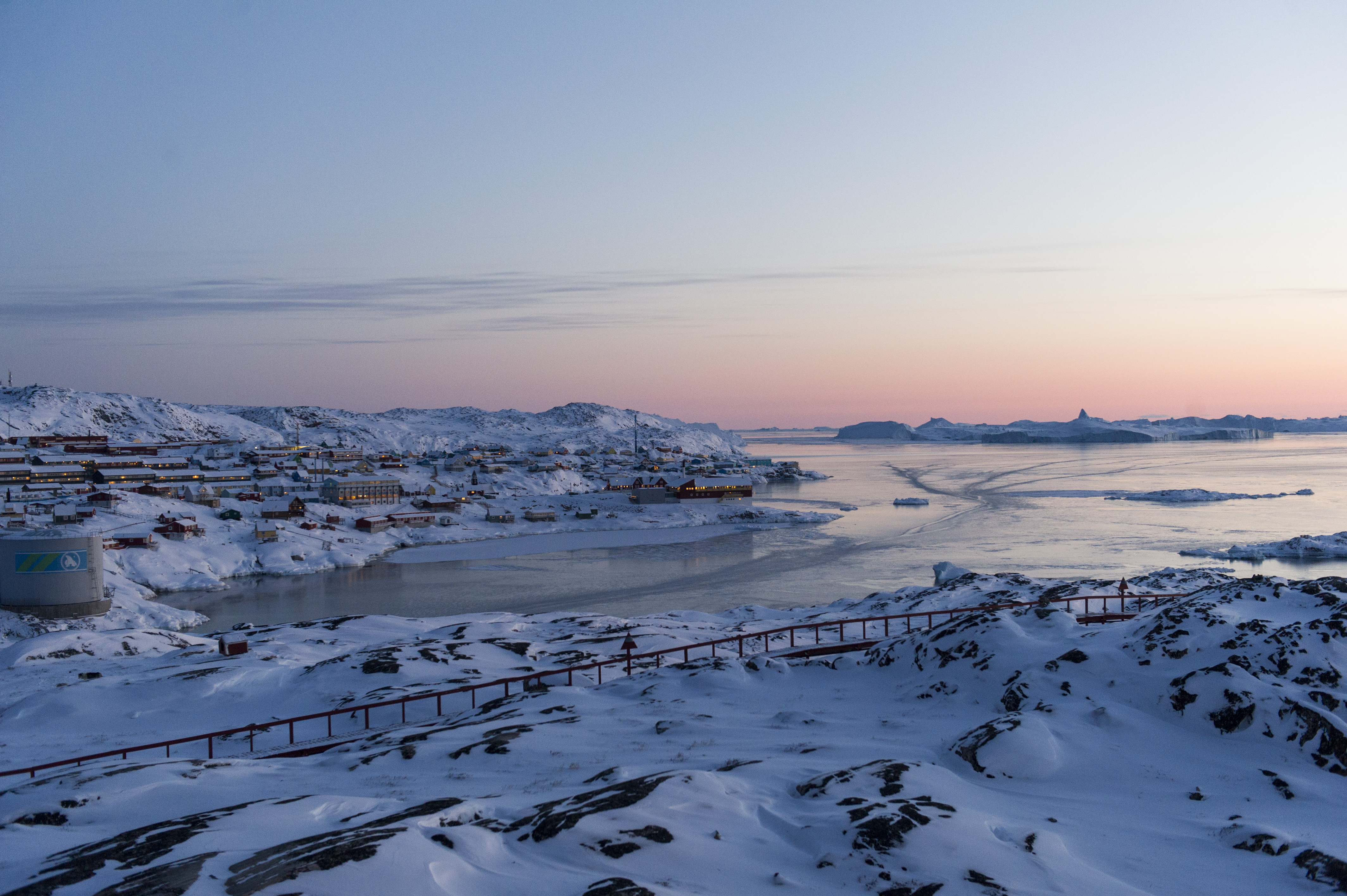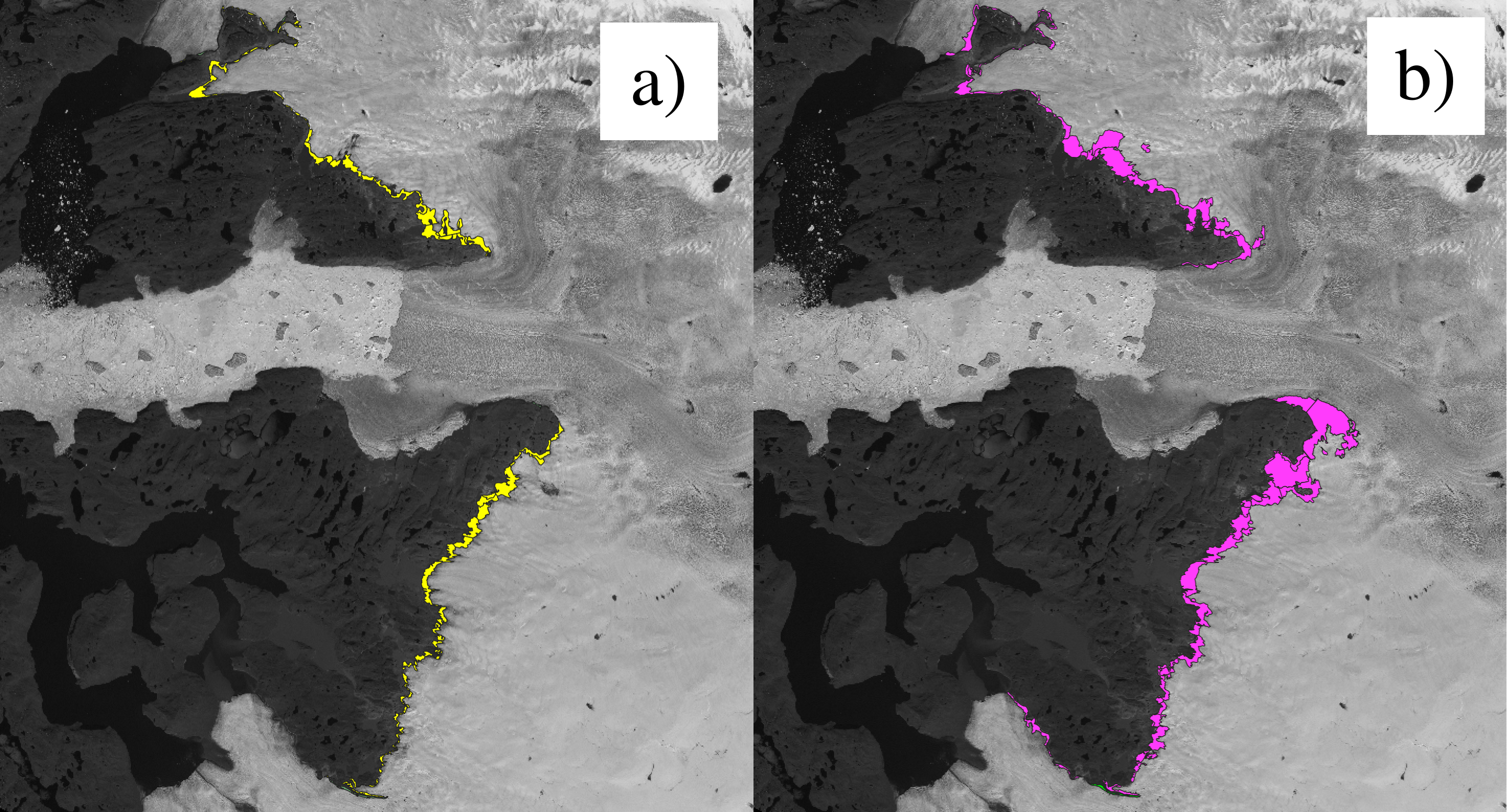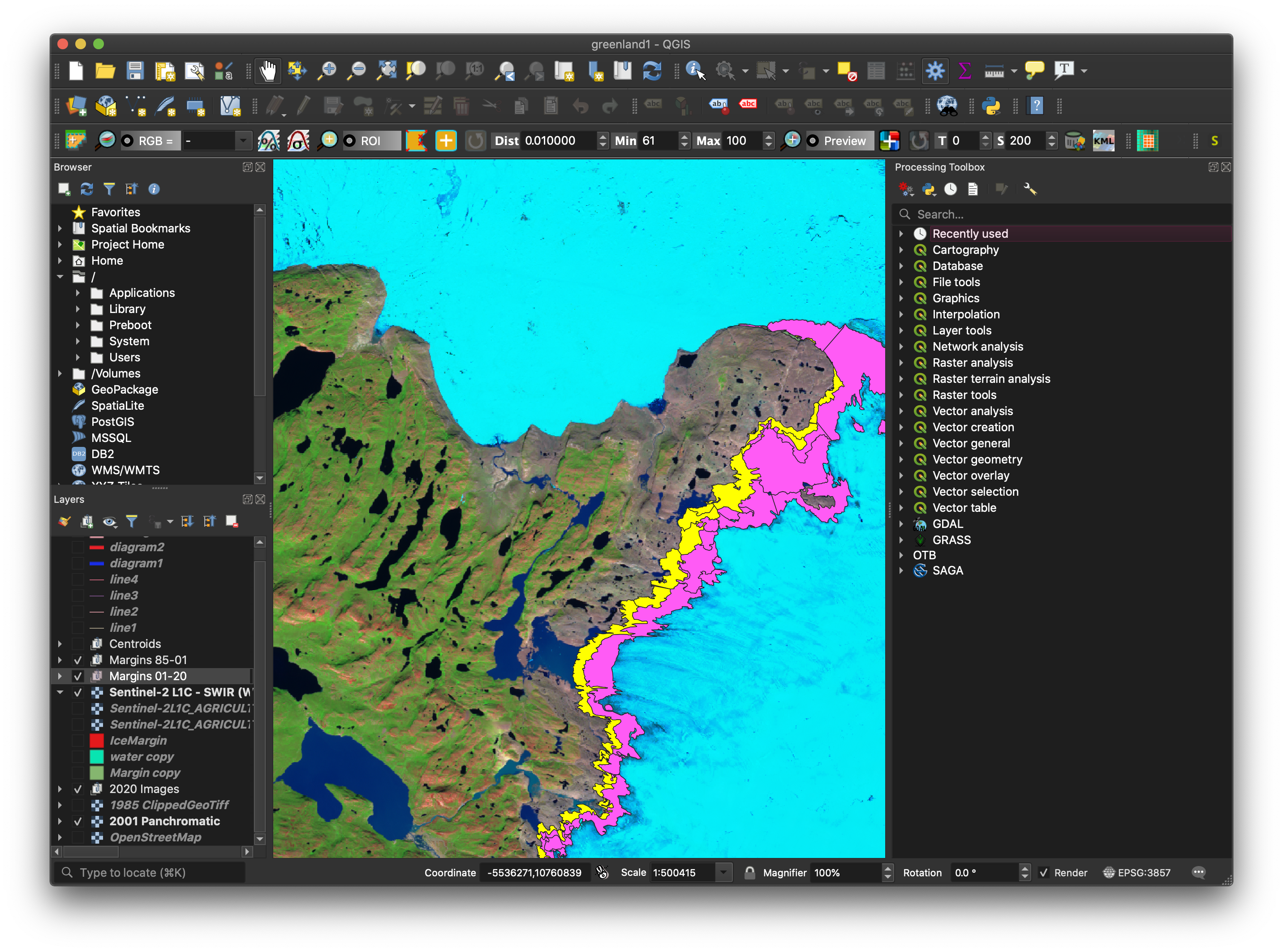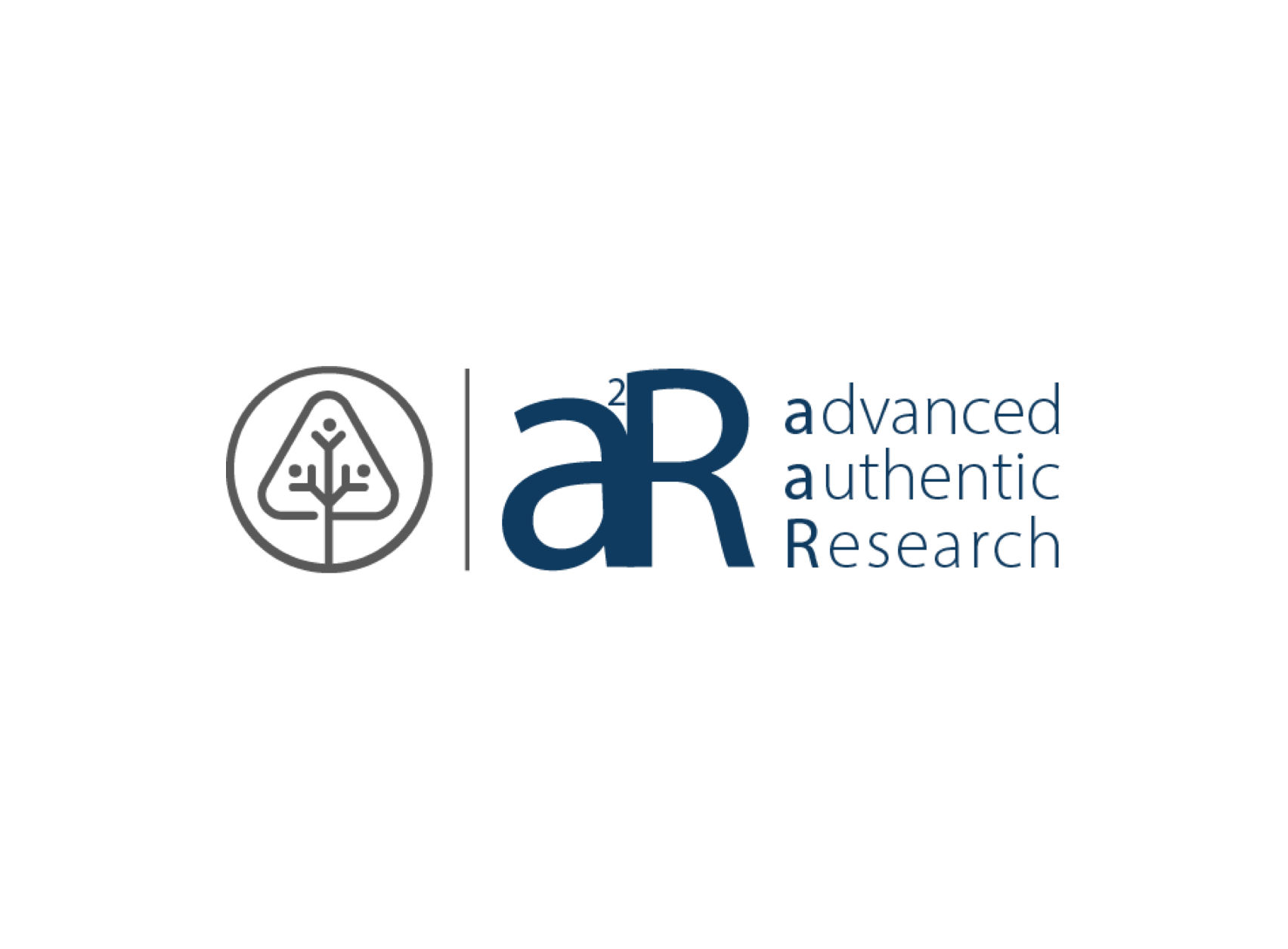
Greenland Ice Sheet (GrIS)
margin retreat driven by marine outlet glacier activity
Arunim Agarwal1, Slawek M. Tulaczyk2
1Henry M. Gunn High School
2Department of Earth and Planetary Sciences, University of California, Santa Cruz

My Research Question
How much has the Greenland Ice Sheet’s retreat accelerated over the last 35 years within the vicinity of the Jakobshavn Glacier, and how does the vicinity to the fast moving glacier impact retreat nearby?
Background Info
The Greenland Ice Sheet retreat is a very clear and quantifiable metric by which climate change can be evaluated. Recent studies have suggested that the ice sheet will continue to contribute to sea level rise, meaning that mapping the future expectations for changes in the ice sheet are vital.
Methods
To quantify the retreat by area, the datasets were loaded into QGIS, and sections of the retreat were mapped by creating polygons. Four sets of polygons were made by hand: two sets of polygons for each of the sets of years of retreat.
Polygons marking the margin retreat for a) 1985-2001 North and South in yellow (left), margin retreat for b) 2001-2020 North and South in pink (right).
Research Findings
The interactive figure below shows the general results of the study. Horizontal bars indicate the retreat rates at different latitudes, and the area of the bars correspond to the area of each section of retreat.
The paramount importance of Jakobshavn Glacier retreat in driving the retreat of the land-based ice sheet margin is illustrated by the fact that the highest retreat rates between 2001 and 2020 occur in the vicinity of the fjord. The retreat rates at the margins of our study area, which are the furthest from Jakobshavn Glacier, are near zero within uncertainties.
Conclusions
This analysis indicated that the closer to the fast-moving marine outlet glacier, the faster the retreat rates. More generally, the retreat of the ice margin has accelerated significantly between the two periods. The vicinity to a glacier likely impacts the retreat rate of the ice sheet around it, specifically muting feedback such as ice-albedo feedback in areas far from the fjord, a factor which warrants further study due to its impact on the future modeling of glacial systems and predictions.
My Learnings
While this was my first full research project, it certainly won't be the last. Through the process, I learned an incredible amount and fell in love with pursuing research.
New Skills
This research project taught me both basic technical skills in the field of glaciology, as well as general research skills. I learned to use geographic information systems and picked up relevant glacial effects and terminology through conversations with my mentor. Most importantly, I gained more confidence in my abilities to produce valuable academic work and know for a fact that if I keep learning through my research, I'll be able to do exceptional work.
Interests
Working on a project so closely intertwined with global warming and climate change, I've grown more interested in sustainability. More specifically, doing this research encouraged me to consider pursuing sustainable technology and energy research.








